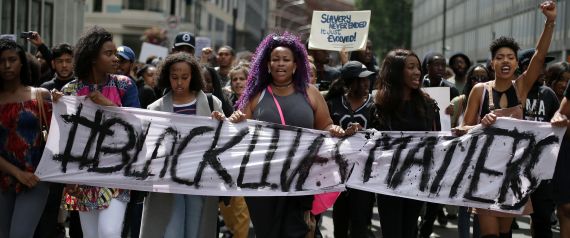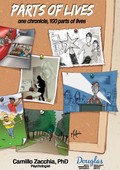I published this in The Huffington Post following the events in the US last week: (See What Is Feeding Gun Violence, Racism and Anger).
Last week’s death toll: two black men following what should have been routine police interventions – or even non-interventions – and five white officers gunned down by a sniper in Dallas. Certainly not a typical week but somehow not all that surprising. So why does this stuff keep happening?
I’m sure everyone has a theory. The politically minded will always trumpet a pet cause such as racism or poverty. But true answers are rarely uni-dimensional. We act and make decisions because of multiple forces influencing us, rarely a single one. Some push, some pull. Some are stronger than others. And all can come together to produce some horrible results at times.
What are some of the forces that went into last week’s events? What feeds gun violence, racism and anger, or a sense of alienation many people and groups feel despite living in a so-called global village?
Racism happens
Let’s start with the obvious one, racism. Why does it still exist in 2016? To understand racism all you need to do is read Dr. Seuss. His story of the sneetches says it all. Racism is a basic byproduct of the human tendency to seek strength in numbers. Any identifying feature – e.g., skin colour, language, religious symbol, flag, or team uniform – will immediately create an us-and-them.
There are fictionalized accounts of this thinking in classics such as Animal Farm or Lord of the Flies, and no shortage of real life examples as well. Some are relatively harmless such as we see during the nationalist frenzy that is the Olympic games or the world cup of soccer. But there are also horrific examples of this thinking in our not too distant past. Groupthink allows for people to dehumanize those who don’t fit a twisted utopian vision. Nazi Germany. Cambodia. Rwanda. Yugoslavia. Armenia. The list of places where group mindsets and identity politics killed millions is long.
Group thinking is natural because humans often need to unite against common enemies. It was especially necessary in an ancestral tribal world. Today we see the benefits of this when people unite to help tsunami victims, Vietnamese boat people, or Syrian refugees. But it also can be dangerously divisive in other contexts.
Racism happens because colour provides an easy feature to detect. When someone does something that bothers you, the ‘guy’ who did it becomes the ‘black guy’ who did it. We do it to identify the bad guy but by adding that extra descriptor we plant the seeds of groupthink and generalization. Generalizing helps us simplify things but in so doing we ascribe the same qualities to every member of a group. Take any family or classroom or workplace and you will quickly see that no two people are the same. Yet when we see a group we somehow lose sight of the individual behind the label.
Seeing an innocent member of your ‘team’ die tragically feeds this sense of ‘us and them.’ Micah Johnson, the Dallas shooter, did not see fathers, sons or brothers. He only saw white people and cops. This is the same mentality that fuels the atrocities of ISIS. When we see a group instead of an individual we feel justified in killing an innocent member of that group. Trained as a soldier, Johnson only saw ‘the enemy.’ This is what we ask of our armed forces personnel. Don’t question it. We’re the good guys, they’re the bad guys – every single one of them! But in a war the bad guys don’t realize they’re the bad guys. They all think they’re the good guys.
Power corrupts
Self-preservation feeds greed. Put anyone in a position of authority and it won’t be long before the forces of corruption take over. In many parts of the world, you are only guaranteed safe passage to wherever you are going if you pay a police officer or soldier. We are actually quite lucky in North America. Rules, internal affairs departments, and codes of moral conduct keep this natural instinct at bay. But greed will always be a factor for some and power will provide them an opportunity to feed this most basic of human instincts. A position of power fuels the belief that you are right and that others should do what you tell them to.
Most cops are honest and well-intentioned. I know many personally. We saw their integrity after 9-11, and when we need help police officers are our go-to protection. Nevertheless it only takes a tiny number to make us question all of them. Unfair perhaps but another product of groupthink.
Fear happens
Fear is a normal protective instinct. Threats do exist and fear keeps us on guard. But in a perversion of this, many people have taken to gun ownership as a form of ‘protection.’ The problem with this is that when people know you are potentially armed their own fear increases as well. Police officers are no different. They are more likely to act aggressively when they fear for their lives. It is a self-fulfilling circle of fear and mistrust.
The higher the percentage of armed citizens, the higher the fear felt in any confrontation. Fear amps up the itch on the trigger fingers of both sides.
The final formula
Put these ingredients together and you get last week’s results. Groupthink leads to racial profiling on one side and a mistrust of all cops on the other. All we see then are colour and uniforms. Throw in the knowledge that many citizens are armed and you create a potentially lethal confrontation. Sometimes a bullet is fired in anger. Other times it can be the result of blinding fear. Regardless, someone will leave on a stretcher or in a body bag.
In a world where we lose sight of individuals and see only the label they represent the cops feel like victims…and the citizens feel like victims. We end up living in a black and white world both figuratively and literally.
Tagged as groupthink, Micah Johnson, Racism.
Posted in Anger and conflict, Human nature.
Posted on 15 Jul 2016

